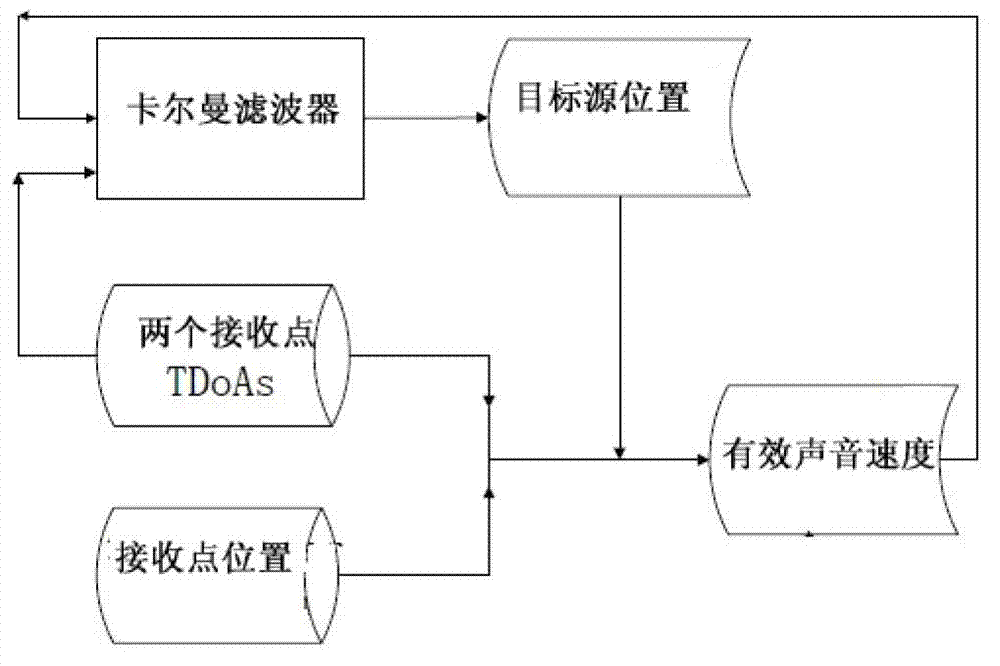Underwater acoustic locating method based on equivalent sound velocity
A technology of underwater acoustics and positioning methods, applied in positioning, measuring devices, instruments, etc., can solve problems such as positioning errors of sound propagation models
- Summary
- Abstract
- Description
- Claims
- Application Information
AI Technical Summary
Problems solved by technology
Method used
Image
Examples
Embodiment 1
[0039] An underwater acoustic positioning method based on equivalent sound velocity, comprising the following steps:
[0040] Step 1: Initialize, set the initial position p of the underwater target source m (x m ,y m ,z m ), randomly place n sensor receivers underwater, i.e. receiving nodes, and record their positions as p 1 (x 1 ,y 1 ,z 1 ), p 2 (x 2 ,y 2 ,z 2 ),...,p n (x n ,y n ,z n );
[0041] Step 2: Measurement of Time Difference of Arrival (TDoA), the calculation of Time Difference of Arrival adopts the generalized cross-correlation (GCC) method, the target source is known to emit sound wave s(t), and the sound wave signal received by the i-th receiving point is defined as: ri (t)=h i (t)×s(t)+n i (t), the acoustic wave signal received by the jth receiving point is: r j (t)=h j (t)×s(t-τ)+n j (t), where n i (t) and n j (t) represent the additive noise of the sound waves received by the i-th receiving point and the j-th receiving point, assuming n i...
Embodiment 2
[0075] Such as figure 1 As shown, taking the underwater vehicle AUV as an example, an underwater acoustic positioning method based on the equivalent sound velocity includes the following steps:
[0076] Step 1: Arrangement of sensor receiving nodes and parameter statistics. Set the initial state of the embodiment: the initial position of the underwater vehicle AUV is p m =[1000, 1000, 10] T , the positions of the four underwater receiving nodes are: p 1 =[0,0,0] T ,p 2 =[2000, 2000, 5] T ,p 3 =[1000, 0, 100] T ,p 4 =[0, 1000, 100] T , during most of the voyage time, the underwater vehicle moves along a straight line, and the speed of the AUV in this embodiment is taken as v m ==[-20, 10, 1] T m / s, the negative direction indicates the increase of depth.
[0077] Step 2: Measurement of Time Difference of Arrival (TDoA). pass figure 2 In the process shown, multiplication, averaging, and maximizing the output, the arrival time difference of the two signals can be ca...
PUM
 Login to View More
Login to View More Abstract
Description
Claims
Application Information
 Login to View More
Login to View More - R&D
- Intellectual Property
- Life Sciences
- Materials
- Tech Scout
- Unparalleled Data Quality
- Higher Quality Content
- 60% Fewer Hallucinations
Browse by: Latest US Patents, China's latest patents, Technical Efficacy Thesaurus, Application Domain, Technology Topic, Popular Technical Reports.
© 2025 PatSnap. All rights reserved.Legal|Privacy policy|Modern Slavery Act Transparency Statement|Sitemap|About US| Contact US: help@patsnap.com



